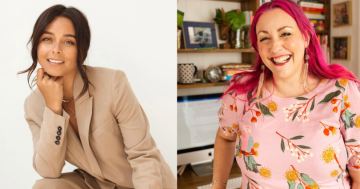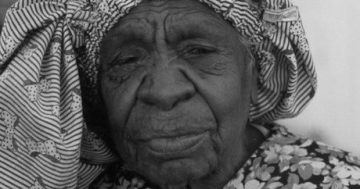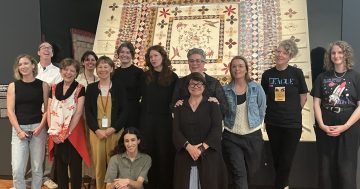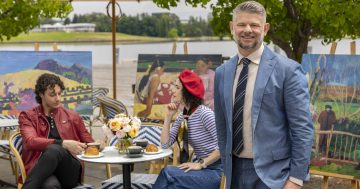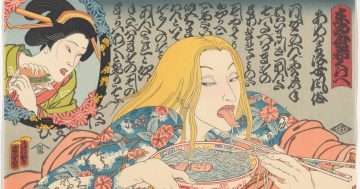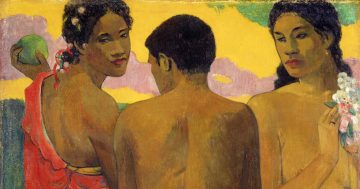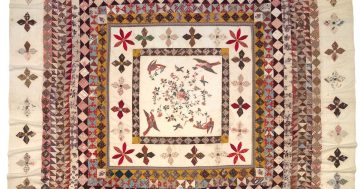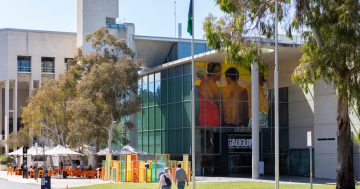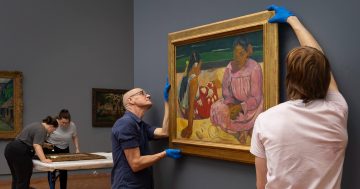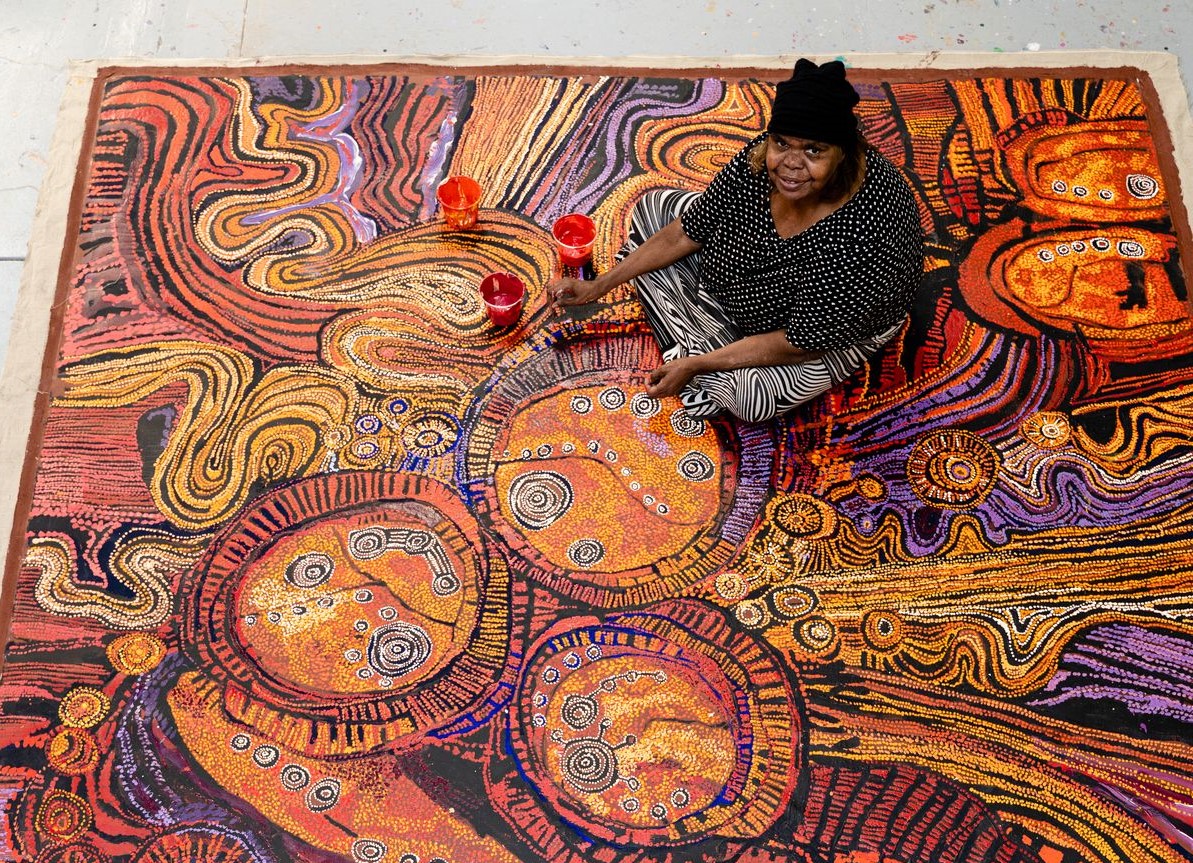
One of the artists and art works from the Ngura Pulka promotion. Photo: NGA.
The National Gallery will reschedule the Ngura Pulka exhibition after an inquiry cleared it of doubts about the authorship of some of the paintings stemming from claims of outside involvement in the works, but the showcase of Aboriginal art still faces scrutiny from a government probe.
The NGA had partnered with the APY Art Centre Collective (APY ACC) from South Australia to stage a major exhibition in June but faced bombshell media claims that white studio assistants had painted on the Indigenous artworks.
The claims prompted the postponement of the exhibition and two inquiries, one launched by the NGA and the other by the South Australian Government, which is yet to report.
The independent NGA review panel found no direct credible evidence of interference or enhancement and that all 28 paintings met the gallery’s provenance standards.
Its report said the panel members spoke directly to the artists, “who unequivocally told us that the works under review in each case were made by them and expressly denied that there had been any improper interference in the making of their work”.
“The Artists were very clear in stating (for example): ‘That is my painting; that is my work’; ‘It was only us Anungu people’; ‘No one added to it. It’s from our hands, the family did this together’; ‘[painting] is not the white staff’s job’; ‘you can ask a pirinap – white person- for an advice, but not for them to touch your work, which … you don’t’; and ‘No one comes to tell me I can paint. … I created, I’m creating’,” the report said.
The panel placed considerable weight on this and other similar evidence and determined that it should only be reviewed where there was plausible contradictory evidence of a direct nature.
It examined the direct evidence which suggested that there had been improper interference with the artistic control of the artists but found it could not be relied upon.
It found important errors in the contradicting evidence, an absence of any persuasive corroboration by either a third party or by any contemporary documented evidence, and no sworn evidence, despite it being requested.
The panel said there was direct evidence supporting the artists’ claims to authorship, including key parts provided in a sworn form.
But the panel also acknowledged that new information may come to light that could mean it would have to reconsider its conclusions.
In a statement, the National Gallery said it accepted the findings of the independent review and had agreed to reschedule the exhibition.
“As part of the National Gallery’s Due Diligence and Provenance Policy, we always remain open to new research for any provenance issues,” the gallery said.
“We will work closely with the artists and, following our usual process, make programming decisions in due course.”
The panel noted that it was not its role to review the operations of the APY ACC or its dealings with artists generally or the provenance of other paintings by APY artists.
It said much of what it heard from people other than the artists and current APY ACC and Art Centre staff referred to issues that were beyond the scope of the review, such as what were said to be problems with the management of APY ACC.
These were matters more appropriate for the South Australian Government investigation, the Panel said.
Critics say the panel did not talk to a key witness and the finding is not surprising given the review’s narrow terms of reference.
The reviewers were Colin Golvan KC, who has extensive experience in copyright protection for Indigenous arts, and Shane Simpson, founder of Simpsons Solicitors, a recognised expert in arts, entertainment, cultural property and copyright laws.
Professor Maree Meredith, a Bidjara woman and University of Canberra’s Pro Vice-Chancellor Indigenous Leadership, and Kokatha and Nukunu artist Yhonnie Scarce advised them.











